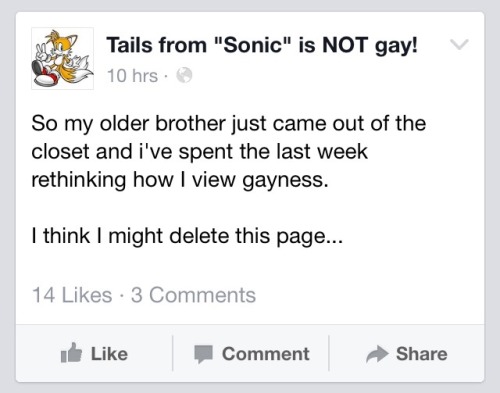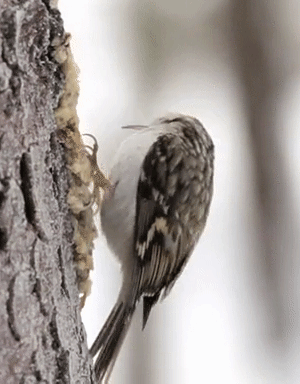Everybody Give It Up For Columnar Jointing
Everybody give it up for columnar jointing
More Posts from Eggxecutive-dysfunction and Others

Trail of the Returner : Familiar stars of a northern winter’s night shine in this night skyview, taken near Zhangye, Gansu, China and the border with Inner Mongolia. During the early hours of December 17 Orion is near center in the single exposure that captures a fireball streaking across the sky, almost as bright as yellowish Mars shining on the right. Splitting Gemini’s twin bright stars Castor and Pollux near the top of the frame, the fireball’s trail and timing are consistent with the second skipping atmospheric entry of the Chang'e 5 mission’s returner capsule. The returner capsule was successfully recovered after landing in Inner Mongolia, planet Earth with about 2 kilograms of lunar material on board. The lunar sample is thought to contain relatively young material collected near the Mons Rumker region of the Moon’s Oceanus Procellarum. Launched on November 23 UT, China’s Chang'e 5 mission is the first lunar sample return mission since the Soviet Union’s Luna 24 mission in 1976. via NASA

That smile at the end? Priceless...


Eurasian Treecreeper - ML201049451, Per Naesje
*misses fruits that are out of season*
Is there a bird out there that looks remotely SciFi 🤔 there's gotta be one fella out there with some pattern on them...
So I think you probably want a very futuristic spacey bird, but I'd also like to add some fellas that could easily wander on and about on some alien world and totally fit in Let’s do a list thingy! Four sci-fi birds, whether it’s because they look alien, like a spacecraft or just generally fit the vibe!
1. The Black heron

The black heron, is a member of the Ardeidae occurring in Africa, well known for its peculiar feeding habit, which professionally is referred to as “canopy feeding”. When it does that it uses its wings like an umbrella, creating shade and in turn attracting fish and other prey items. More importantly, its metallic plumage makes it look like a funky UFO.
2. The Andean cock-of-the-rock

First of all here’s what some journalist has to say on these birds (ʰᶦⁿᵗ: ᵗʰᵉʸ’ʳᵉ ʳᶦᵍʰᵗ)

Now, there’s so much to say about cocks-of-the-rock; why they’re called that, why they sound so weird, whatever is going on with their head? Let’s only focus only the latter for this one. First of all, Andean cocks-of-the-rock are sexually dimorphic and while females still look weird, it’s much less extreme on them than it is with males. The thing on their head is a crest, much like that of a tufted titmouse or Eurasian hoopoe, just that it’s shaped like a disk. Overall they’re just fantastic aliens.
3. Any Hornbill

The “horn” on the huge beak of a hornbill, called a casque (not to be confused with the cacique) is there to add strength and/or counterweight to the bills (which is needed, or at the very least helpful when chiselling in bark or hard soil), sometimes also acting as sound chambers to augment vocalisations. Also, considering that casques are usually larger on males than they are on females, and that they can take several years to reach full size, they may be a sign of sexual maturity or status. This - in addition to the many colours a hornbill can have and the wattle makes earth look quite ✨extra-terrestrial✨ (ʸᵉˢ ᴵ ᵏⁿᵒʷ ᵗʰᵃᵗ ᶦˢ ᶜᵒⁿᵗʳᵃᵈᶦᶜᵗᵒʳʸ).
4. The Metallic starling

The metallic starling is an Australasian bird that from a far may seem like just another black bird, however given the right angle and light they show a stunning array of purple and green iridescence. Another very notable feature are their brilliant black eyes. Definitively very spacey, 10/10 birds, would take over a planet if they’d were to try.

Also you asked for patterns! I didn’t include them but perhaps, golden pheasants, sunbitterns or wilson's bird-of-paradise could be of interest to you!

Photo credits: ATLAS1GP, ryanacandee, Bernard DUPONT, Leon Molenaar, TOONMAN_blchin, Jim Boud, cuatrok77, Art G.
Sources: Audubon Society - Watch a Black Heron Fool Fish by Turning Into an Umbrella, Wikipedia The Free Encyclopaedia - Andean cock-of-the-rock, Birdwatching: Your source of becoming a better birder - Julie Craves explains the purpose of hornbills’ huge bills, San Diego Zoo Wildlife Alliance Animals & Plants - Metallic Starling
would anyone like a nice warm glass of grungnort?

-
 birdmanstein liked this · 1 week ago
birdmanstein liked this · 1 week ago -
 amaranthnymph reblogged this · 1 week ago
amaranthnymph reblogged this · 1 week ago -
 minced-mangoes reblogged this · 1 week ago
minced-mangoes reblogged this · 1 week ago -
 minced-mangoes liked this · 1 week ago
minced-mangoes liked this · 1 week ago -
 shanklinthestabpossum reblogged this · 1 week ago
shanklinthestabpossum reblogged this · 1 week ago -
 sprinkleofstarstuff liked this · 1 week ago
sprinkleofstarstuff liked this · 1 week ago -
 xp-luna-m0th liked this · 1 week ago
xp-luna-m0th liked this · 1 week ago -
 octopushotdogs reblogged this · 1 week ago
octopushotdogs reblogged this · 1 week ago -
 chansondematin liked this · 1 week ago
chansondematin liked this · 1 week ago -
 cursing-vermin reblogged this · 1 week ago
cursing-vermin reblogged this · 1 week ago -
 peskymiddlekid liked this · 1 week ago
peskymiddlekid liked this · 1 week ago -
 heart-shot reblogged this · 1 week ago
heart-shot reblogged this · 1 week ago -
 agengingeer reblogged this · 1 week ago
agengingeer reblogged this · 1 week ago -
 crystaleyesd liked this · 1 week ago
crystaleyesd liked this · 1 week ago -
 randomize-stuff-blog reblogged this · 1 week ago
randomize-stuff-blog reblogged this · 1 week ago -
 randomize-stuff-blog liked this · 1 week ago
randomize-stuff-blog liked this · 1 week ago -
 femboycatfish liked this · 1 week ago
femboycatfish liked this · 1 week ago -
 gh0stguts reblogged this · 1 week ago
gh0stguts reblogged this · 1 week ago -
 reallyexists liked this · 1 week ago
reallyexists liked this · 1 week ago -
 mistakes-have-been-made liked this · 1 week ago
mistakes-have-been-made liked this · 1 week ago -
 fantasticwolfpenguin reblogged this · 1 week ago
fantasticwolfpenguin reblogged this · 1 week ago -
 fantasticwolfpenguin liked this · 1 week ago
fantasticwolfpenguin liked this · 1 week ago -
 greenduck54 reblogged this · 1 week ago
greenduck54 reblogged this · 1 week ago -
 greenduck54 liked this · 1 week ago
greenduck54 liked this · 1 week ago -
 oops123migget liked this · 1 week ago
oops123migget liked this · 1 week ago -
 palayso reblogged this · 1 week ago
palayso reblogged this · 1 week ago -
 palayso liked this · 1 week ago
palayso liked this · 1 week ago -
 therandominternetperson reblogged this · 1 week ago
therandominternetperson reblogged this · 1 week ago -
 thribby reblogged this · 1 week ago
thribby reblogged this · 1 week ago -
 generative-sorcery reblogged this · 1 week ago
generative-sorcery reblogged this · 1 week ago -
 generative-sorcery liked this · 1 week ago
generative-sorcery liked this · 1 week ago -
 rose---child reblogged this · 1 week ago
rose---child reblogged this · 1 week ago -
 totallynotasideblog reblogged this · 1 week ago
totallynotasideblog reblogged this · 1 week ago -
 ultraluckystella reblogged this · 1 week ago
ultraluckystella reblogged this · 1 week ago -
 a-very-salty-dragon reblogged this · 1 week ago
a-very-salty-dragon reblogged this · 1 week ago -
 a-very-salty-dragon liked this · 1 week ago
a-very-salty-dragon liked this · 1 week ago -
 thewackyzone liked this · 1 week ago
thewackyzone liked this · 1 week ago -
 the-lavender-creator reblogged this · 1 week ago
the-lavender-creator reblogged this · 1 week ago -
 mocktortis reblogged this · 1 week ago
mocktortis reblogged this · 1 week ago -
 seventyeight-moose reblogged this · 1 week ago
seventyeight-moose reblogged this · 1 week ago -
 escaped-goat liked this · 1 week ago
escaped-goat liked this · 1 week ago -
 steampaul reblogged this · 1 week ago
steampaul reblogged this · 1 week ago -
 cecilcastles liked this · 1 week ago
cecilcastles liked this · 1 week ago -
 acespecasf liked this · 1 week ago
acespecasf liked this · 1 week ago -
 slightlyobssesive reblogged this · 1 week ago
slightlyobssesive reblogged this · 1 week ago -
 ripeossis liked this · 1 week ago
ripeossis liked this · 1 week ago -
 coldgoldlazarus reblogged this · 1 week ago
coldgoldlazarus reblogged this · 1 week ago -
 creepydeeps reblogged this · 1 week ago
creepydeeps reblogged this · 1 week ago -
 hermajestythebomb reblogged this · 1 week ago
hermajestythebomb reblogged this · 1 week ago

